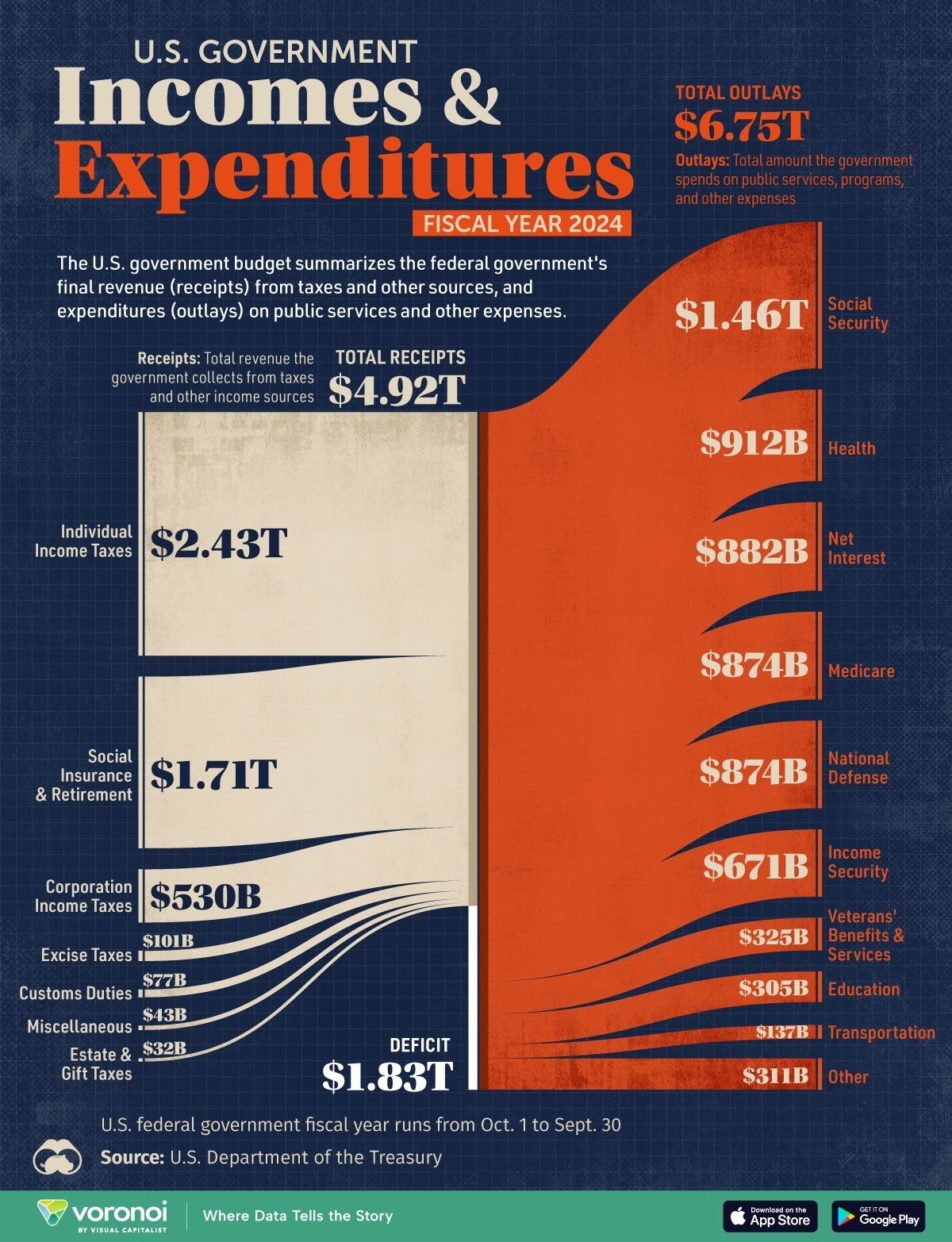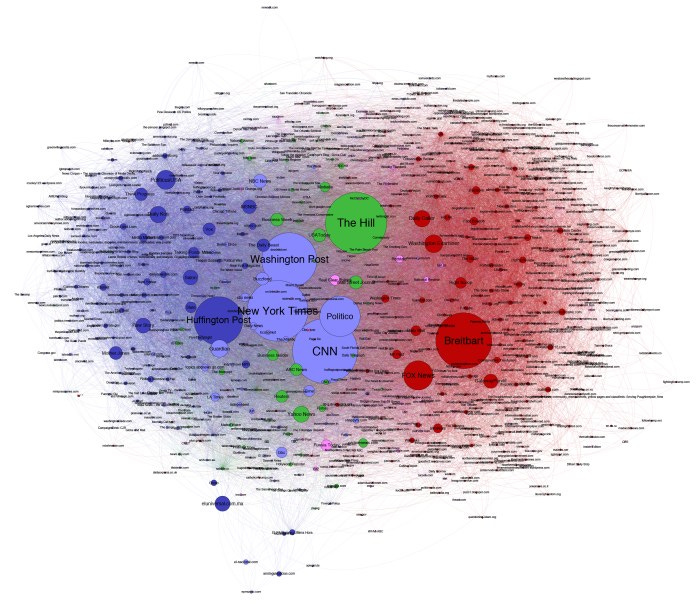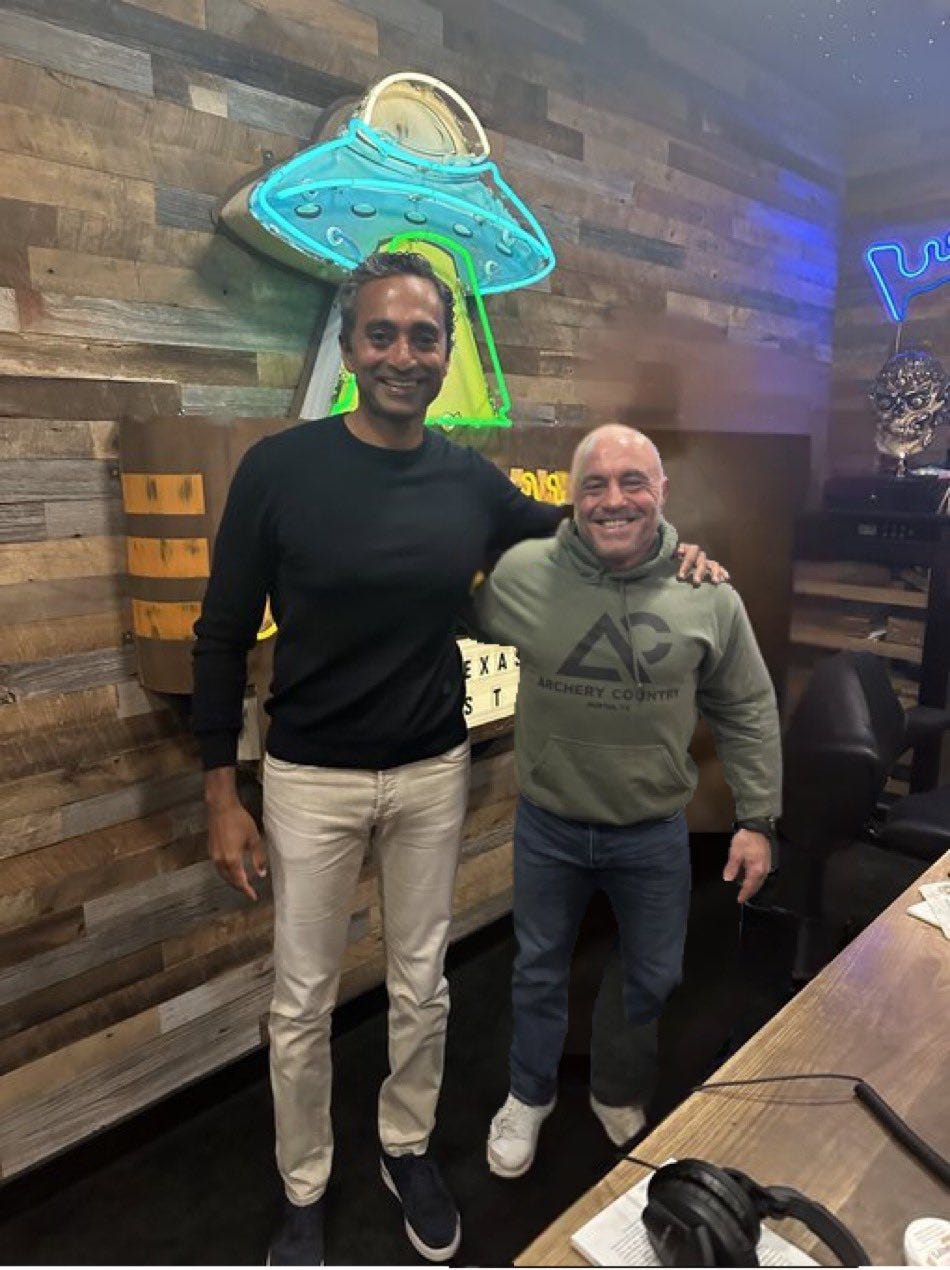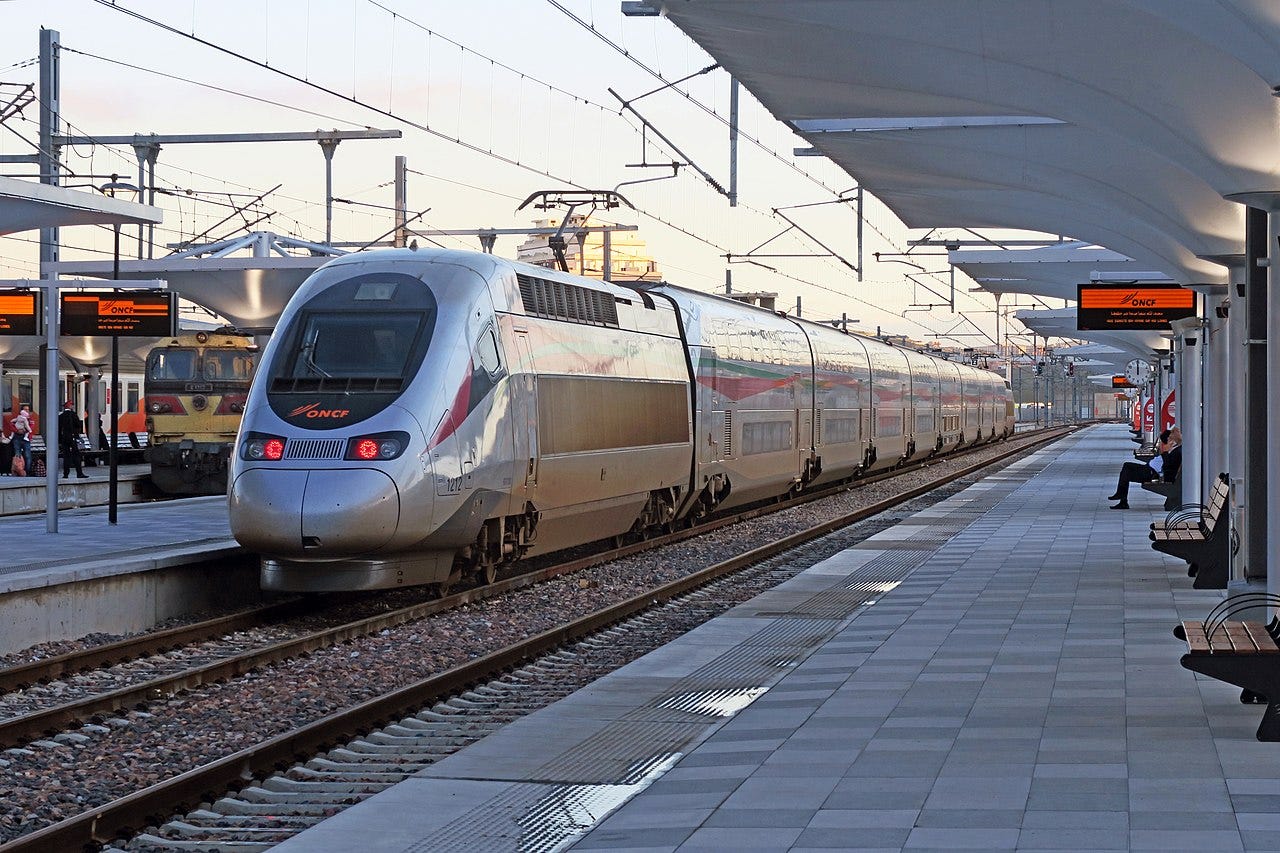The 5K Subscriber Special Q&A: US Politics: Brunch, Balkanization, & Bullet Trains
The Trump Bump Among Black Men, America vs. Europe, the Digital Civil War, and How Party ID Became a Religion
Some Housecleaning:
I’m still deep in the weeds on Nigeria, Part II — it’s a beast. I realized I’ll need to split it into Northern and Southern sections, and its a perfect opportunity to delve into the Trans-Saharan Slave trade vs. the Trans-Atlantic slave trade. So consider this 5K Q&A a bit of filler to tide you over. Many people, including friends of mine, insisted that I make a post on American politics. So skip if you aren’t interested.
This is a piece about five things:
How divided is the U.S., really?
Black voter identification and the so-called Black Trump bump
Why belonging beats truth in politics
The civil war already happening—digitally
What America gets right (and wrong) compared to Europe
#1 How Divided is US, Really?
What used to be a disagreement over policy has become a rupture over identity. American politics now feels less like a debate over ideas and more like a religious schism.
A 2024 Journal of Personality and Social Psychology study named “I love you but I hate your politics: The role of political dissimilarity in romantic relationships.” was released. It took a 11 datasets with thousands of individuals to see their political ideologies and other attributes. It found that 77% of couples share the same political identity. Only 23% of couples were cross-partisan, and fewer than 8% paired a Democrat with a Republican.
That level of sorting wasn’t always the norm. You can see the same kind of tribal drift in Congress.
In this graph below of roll-call votes, each dot represents a legislator—red for Republican, blue for Democrat. In the 1950s, the dots were clustered loosely together. By 2011, they’d split into two distinct tribes, barely touching.
Once, parties were coalitions of strange bedfellows. Today, they’re homogenous blocs. The Cold War united Americans, but now the Culture War divides them.
Will the “Cold War 2.0” with China unite Americans again? I don’t think so to be honest.
#2 Black Voter identification in the United States
There’s a common myth that Black Americans only started voting Democratic after the Civil Rights Act or because of Barry Goldwater’s “Southern Strategy.” That’s not quite true. Goldwater’s campaign did accelerate the shift—from 58% to 82% Democratic identification—but Black voters were already leaning Democratic decades earlier.
By the 1940s and 1950s, a majority of Black Americans had begun supporting Democrats—thanks in part to FDR’s New Deal and local urban machines. But this was within a party so ideologically jumbled it could house both Northern Black voters and Southern segregationists under the same tent.
The Democratic Party back then was a different patchwork:
Isolationist rural Midwesterners vs. internationalist Northeasterners
Reformers vs. machine politicians
Urban immigrants (Jews, Catholics, Italians) vs. rural populists
And yes—Black voters vs. Dixiecrats
Even before the Civil Rights Act, black Americans were already shifting toward the Democratic Party. By the early 1950s, a majority identified as Democrats. (See the Washington Post chart below.)
Fast forward to 2024: the Democratic Party still commands the overwhelming majority of the Black vote, but there’s a noticeable shift—Trump pulled in 16% of black voters, up from 8% in 2016 and 2020, and 4–6% in 2008 and 2012.
That 2024 number hides a deeper split: about 25% of Black men voted for Trump, while only 7% of Black women did.
The reasons are complex—disaffection, gender divide politics, the absence of Obama—but the takeaway is clear: Black political identity remains overwhelmingly Democratic, but no longer monolithic as it was prior.
#3 How Belonging Beats Truth
I call it “No One Wants the Truth at Brunch”-ism — a social phenomenon where facts take a backseat to harmony.
Pundits love to say, “Don’t be loyal to a party or personality — be loyal to principles!” But in practice, American political behavior rarely runs on reasoned issue-by-issue analysis. It runs on identity, belonging, and team loyalty - political tribalism.
This may seem irrational, but it's not. It’s human psychology.
One of my favorite economists, George Akerlof, a Nobel laureate known for his work on information asymmetry, put it like this:
What does this quote mean in plain English?
We interpret facts to suit our emotions. People absorb information in ways that protect/align their desires, identity, and worldview. This bias interacts with how people perceive themselves, their activities, and the society they live in.
We chase comfort more than truth. There’s a tension between two goals: feeling good and being right. Feeling good usually wins.
Truth isn’t incentivized. Since your individual vote or opinion has little effect on national policy (there is a collective influence, but not an individual’s), why bother paying the social cost of being a contrarian? Individuals are incentivized to choose a worldview that maximizes their personal happiness/ psychological worldview confirmation without considering the consequences for social policy or even if it is true.
The Implications:
You can read the books, analyze the data, interview people, question your own beliefs — and still get zero social reward for pointing out something unpopular.
I’ve seen this firsthand. A few days ago, I was talking politics with my liberal group of friends in Brooklyn — smart, highly educated, mostly first-gen and second-gen Africans and Asians working in tech, consulting, law, or banking. They are a loyal Democratic base called the “professional managerial class”.
Someone mentioned that the U.S. spends the most on the military than any other line item in the federal budget. Then a group of friends agreed and the conversation continued about that — except it was wrong. The top federal spending categories are:
Social Security ($1.46T)
Medicare & Health ($0.912T)
Interest on the debt ($0.88T)
Then the military ($0.87T)
See chart below:
I have two ideas why I keep hearing some-but-not-all liberals get this wrong. First, I think people confuse discretionary spending with total federal spending. The military is the largest discretionary line item — what Congress debates each year. But once you include mandatory spending like Social Security, Medicare, interest on debt, and Medicaid, the military drops to fourth.
Second, they may know it’s wrong — but saying “the military isn’t #1” doesn’t signal moral virtue. Saying “we should spend more on people than bombs” does.
I knew I had the facts, and that America literally does spend more on “people then bombs”:
Social Security ($1.46T) + Medicare/Health ($912B) + Medicaid ($874B) + Income Security programs like food stamps, unemployment benefits, and housing vouchers ($671B) — that’s nearly $4 trillion. America's spending on people quadruples its military budget.
But even if it’s true on paper, it doesn’t feel true to them.
I stayed quiet. There was no social upside in correcting them — and this wasn’t the kind of group that welcomes debate on issues they consider foundational to their worldview unless it’s one-on-one.
And that’s the thing:
I have no problem correcting people in one-on-one conversations. But in a group, you risk coming off as socially tone-deaf — the insufferable know-it-all who ruins brunch. I call this “No one wants the truth at Brunch”-ism, but the academic, economic word for this is “Preference Falsification”.
In other words, truth is expensive. And often, unrewarded.
Many Americans tell themselves they want honest debate. But in the moment, when it’s your friends, your team, your tribe — we want affirmation. People typically want the brunch to go smoothly.
#4 The Civil War is Here and its Digital
Let me be clear: America is not headed for another Civil War — at least not in the traditional sense. We won’t see blue and gray armies lined up across battlefields again.
Worst-case scenario? Pockets of internecine violence — isolated eruptions, not national fracture.
Why? Because the geography of America’s division has changed.
In the 1860s, the lines were clear: free states vs. slave states, Union blue vs. Confederate red. The country was split by borders, and war meant invading territory.
Today, it’s different.
Democrats and Republicans live in all 50 states. Look at a map of the 2024 election by county — the split isn’t North vs. South. It’s urban vs. rural.
In today’s America, a liberal can’t “nuke” Texas or Florida without killing fellow Democrats. And a Republican can’t flatten California or New York without taking out plenty of conservatives too. The divide isn’t territorial — it’s digital.
In a traditional war, you invade your enemy’s land, but in a digital war, you invade their mind. You don’t send tanks — you send talking points, memes, and symbols. You plant software in people’s heads — narratives that make them see the world more red or more blue. It’s a chess match of ideology, and it’s already happening.
Take a look at the Twitter (X) ecosystem (this was pre-Elon, but it’s even worse today with liberals flocking to BlueSky). Imagine each account as a node:
Blue nodes are Democrats.
Red nodes are Republicans.
Green nodes are considered neutral.
The larger the node, the larger the audience.
Red follows red. Blue follows blue. The two networks orbit each other with very little overlap. Information no longer flows between political tribes — it just reverberates within them.
But that doesn’t mean there’s no digital combat.
In the 2010s to covid era, culturally liberal & social justice advocates pushed into “no man’s land” by trying to bring inclusivity into spaces. This meant influencing corporate HR policies, rebranding cancel culture as accountability culture, de-platforming people with problematic views in elite universities, and encouraging pronoun use in professional spaces. To many people who are right leaning or right wingers, this was mindshare warfare — the soft power of reshaping norms.
In the post covid era, conservative & heterodox commentators counterattacked by expanding into traditionally liberal spaces:
They embraced former democrats like podcaster Joe Rogan and billionaire mega donor Chamath Palihapitiya
Dominated Spotify’s podcast charts and TikTok/X/YouTube’s algorithm with voices like Ben Shapiro, Candace Owens, Rave Dubin, Libs of TikTok, Megan Kelly, Jordan Peterson, Matt Walsh, and Michael Knowles
When Peter Thiel helped destroy Gawker, it was a symbolic strike — a cultural power play
This is how the right & skeptic types “meme” the mind: by normalizing their framing of ideas like wokeness, cancel culture, or Russia-Trump collusion. If you start using their language — even critically — the software is already running.
So far I haven’t even touched the veracity of claims. I am just looking at idea propagation.
This is not about fact vs. fiction. It’s about who controls the framework through which people interpret facts in the first place.
Welcome to America’s digital civil war. You’re already in it — whether you’ve noticed or not.
#5 America vs. Europe
Broadly speaking, Europe is better at delivering public services — but Americans earn more, especially at the top end of the income spectrum.
Even if we look at median household disposable incomes indexed for purchasing power parity, America beats every country on earth except small Luxembourg.
Democrats often look to European social democracy as a model: strong healthcare, affordable universities, strong regulations, and functioning trains. Republicans, on the other hand, view resisting that model as essential to preserving American dynamism — the idea that America produces world-beating companies because it doesn't try to look like Denmark, and that inequality is a natural cost of dynamism.
I get both views. When I visited Antwerp and Amsterdam, it was obvious: the roads were better, the food was cleaner, and the cities felt more livable. But then I looked at the salaries of my relatives living in Europe — highly educated STEM professionals — and by American standards, they were shockingly low. Their ability to invest, accumulate wealth, or change class trajectories was far more limited.
In fact, many of them are now moving to the U.S. Why? To consume, earn, and invest more.
The U.S. excels in wealth creation but fails at executing public policy — especially at the local and state level. It’s not just partisan gridlock in Washington. It’s also what happens in deep-blue states with one-party rule.
Let’s talk about infrastructure and rail costs.
In NY, a one party democrat ran state, it will spend $4B just to build 1 km of tunnel. In Hong Kong, that same distance is $1B, and in Spain its $83M.
Another one-party state is California. They have been trying to build high speed rail for almost three decades now.
The California high speed rail authority made a plan in 1996. But California voters didn’t approve of financing it until 2008. Then in perfect timing, Obama was elected and passed the American Recovery and Reinvestment Act in 2009, pumping billions into high speed rail. The project was supposed to be completed right in 2020, but due to delays, cost overruns, and more it didn’t happen. The estimated completion rate for Phase 1 (San Francisco to Los Angeles) is by 2033. Some California government officials say 2040 is more realistic. The Federal Department of Transportation today says there is no viable path forward.
The French company, SNCF, did propose a plan for California’s rail, but withdrew in 2011, citing that California was politically dysfunctional. SNCF then went to Morocco and built high speed rail for them instead.
The project in California has been delayed for a couple reasons:
Cost over runs: It was supposed to cost $33B, but now it has ballooned to ~$130B
Land Acquisition Problems: Right of way acquisition (securing land for tracks) has taken much longer than expected. Many property owners don’t want to sell their land, leading to legal battles and negotiations that stalled progress for years. As of 2025, the land acquisition from the Bakersfield to Merced segment is not fully completed.
Changing Priorities: In 2019, Governor Gavin Newsom has scaled back ambitions for the SF to LA line.
Constant Lawsuits by local communities: Local communities have thrown various lawsuits at the project, by weaponizing California’s Environmental Quality Act, leading to long reviews and lawsuits. Local communities are stalling the project by throwing claims such as wildlife disruption, eminent domain issues, and local community impacts. Its worth noting that not all of these are bad faith claims, noise pollution is a concern that some people have with trains.
Lack of Private Investment: Many private investors avoided this high speed rail project with a 10 foot pole, knowing that the California politics would make this project unprofitable. The California government didn’t put much of an effort to convince investors that this was an undertaking worth pursuing from an investment standpoint. As a result, the project is fully dependent on government funding, which has been inconsistent across administrations. The California government started to make good faith efforts to attract private investors in 2025.
A key takeaway is that Democrats often blame Republican obstruction for policy failures, yet California—a one-party state—shows that many of their struggles are self-inflicted through overregulation, bureaucracy, and inefficiency. Democrats brand themselves as the party of high taxes in exchange for high-quality public services, but when those services fail to materialize, it creates the perception that California simply wastes money. This dysfunction is a major reason why Republicans have gained ground in recent years and why Democratic leadership in those states face growing dissatisfaction (80% disapproval with the Chicago mayor). Ezra Klein and Derek Thompson’s book “Abundance” wouldn’t be a best seller unless these problems were real.
Broadly speaking, the U.S. doesn’t suffer from underfunding — it suffers from underperformance. America spends more on public goods than Europe does, but gets worse results.








![Results by county, shaded by winner's vote share.[s] Results by county, shaded by winner's vote share.[s]](https://substackcdn.com/image/fetch/$s_!AJ4v!,w_1456,c_limit,f_auto,q_auto:good,fl_progressive:steep/https%3A%2F%2Fsubstack-post-media.s3.amazonaws.com%2Fpublic%2Fimages%2Fb6caa96f-2751-4c25-92cf-f65bacf233d6_1280x789.png)






I like this post but also, very little competitive advantage in takes about the US. The takes market is saturated!
Not to demean your usual Africa stuff, which I *IMMENSELY* appreciate (!), but this stuff on civil war in America is some of your best work.